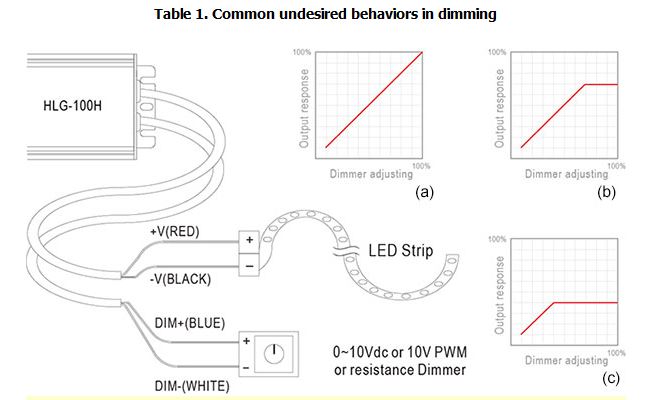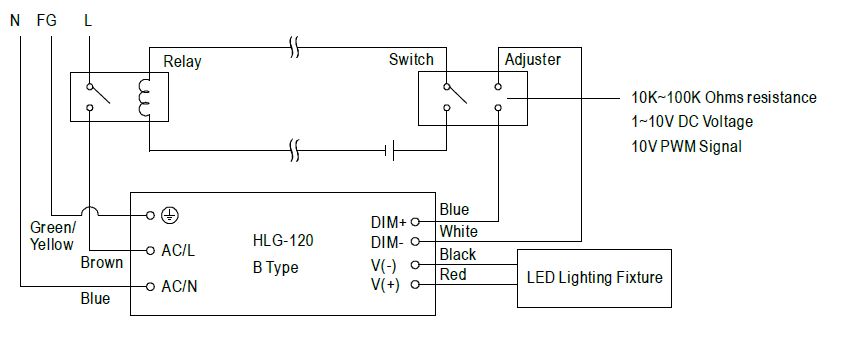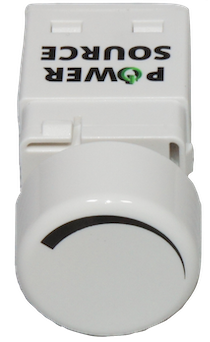Dimming With The Mean Well HLG & ELG LED Drivers
The MEAN WELL HLG 'B' & 'AB' series, and ELG ‘B’ & 'AB' series LED drivers utilise a common dimming method, where the amplitude of the current fed to the LEDs is varied.
This method of dimming works very well, but there is a key factor that you need to be aware of, when selecting a LED driver for your particular application.
That is 'Dead Travel'.
One problem that many installers experience with dimmable LED drivers, is an uneven rate of dimming. This phenomenon doesn't affect constant current LED drivers, only constant voltage drivers such as the HLG 'B’ and ELG series.
Typically, when the dimming control is activated nothing happens for a while. Then a point is reached where the lights suddenly dim down. This is caused by 'dead travel'.
In a nutshell the problem is that the LED driver has only been partially loaded.
Normally we would recommend that you select an LED driver with a power rating 20-30% higher than is actually needed. This is to give some headroom against unforeseen overloads. However, if you do this when using a constant voltage dimmable LED driver, you will end up with the above problem.
Why is this?
Let's presume you have selected the MEAN WELL HLG-100H-12B 100W dimmable LED driver, but only have a load of 70W. When you activate the dimmer nothing will happen until the dimmer has been turned down to 70% of the load. That is when it will start to dim the lights. The LED driver will only dim down to 10% of the load, so this will give you a rather short dimming range.
The below graphs demonstrate how the LED driver will behave with different load levels.
|
Graph a: |
Fully loaded | Even dimming |
| Graph b: | 70% Loaded | Non-perfect dimming result due to small dead travel |
| Graph c: | 30% Loaded | Very poor dimming performance due to large dead travel |

In order to achieve good dimming control we advise that you use more than 90% of the LED drivers load. Ideally 90~95%. This way the dimming will activate pretty much straight away and you will achieve smoother dimming, with a much broader dimming range. This advice also applies to the MEAN WELL NPF-D and LPF-D series LED drivers
If you have too many LEDs for a single LED driver, you can split the load and power them from multiple drivers. A single dimmer can be used to dim multiple supplies, but each LED driver must be loaded to the same level in order to dim at the same rate.
As an example, let's say you have 400W of LEDs. You could use one MEAN WELL HLG-320 running 304W and one HLG-120 running 114W. This way, each supply is loaded to around 95% and will dim at the same rate.
With the exception of the HLG-480H and HLG-600H, all other models in the HLG'B' series dim down as far as 10% of the LED driver's rated output. The HLG-480H and HLG-600H will dim all the way down to zero%.
Due to the high inrush current for LED drivers (a trait of all switching power supplies), best practice for switching off LED lights is by using an external relay. Refer to the below wiring diagram.

The MEAN WELL HLG 'B' / 'AB' and ELG ‘B’ / 'AB' series led drivers, feature Mean Well's 3-in-1 dimming function. This means that they can be controlled with a 1-10V signal, PWM signal or with simple resistance. The HLG-600H and all dimmable ELG models will accept a 0-10V input as they can be dimmed down to zero%.
MEAN WELL LED drivers that feature 3-in-1 dimming can be used in conjunction with the MEAN WELL DAP-04 DALI ~ PWM converter for use in DALI LED lighting systems.
Customers, who are looking for a simple dimming controller should consider the D1-10. This is a low cost 1-10V dimming potentiometer that will fit into most standard wall plates.

Contact ADM for further information on MEAN WELL dimmable LED drivers.
Is this Information Useful?
If so, why not share it with your peers and colleagues. Simply click on the blue LinkedIn share icon below.


